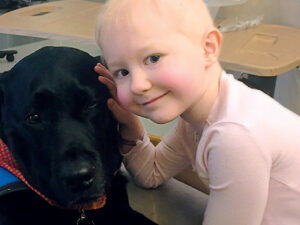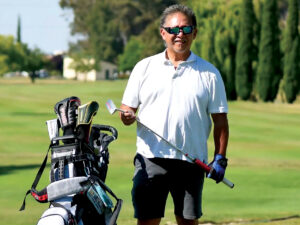Dazell Mallory was born with poor eyesight, and it only grew worse. He was on the brink of blindness — but a skilled surgery restored his sight.

This isn’t just a story about a medical miracle. Hospital doctors and nurses, their extensive education, and a host of equipment help make this sort of life-changing treatment happen, every single day.
Dazell was born extremely near-sighted before becoming blind. With extreme near-sightedness, the eye structure is shaped more like a grape than a ball, and the eyes don’t function normally.
As he grew older, Dazell developed extremely thick, dense cataracts. Cataracts cause the lens of the eye to become cloudy, which affects vision. Most cataracts can be removed, and a new lens implanted, during outpatient surgery.
But Dazell had experienced eye trauma in the past, which meant cataract lens implants, a medical intervention that can help improve sight, might not stay firmly in place.
Dazell’s type of dense cataracts are very hard and don’t break up as easily as typical cataracts. They are also more difficult to remove from the eye. It makes surgery for cataracts like Dazell’s much more complex.
Several ophthalmologists did not want to take on Dazell’s case.
Dazell learned braille and was prepared to live his life blind.
Then he met Dr. Jeffrey Caspar at UC Davis Medical Center. Dr. Caspar has performed more than 10,000 eye surgeries, and he decided to take on the challenging surgery that could change Dazell’s life.
Cataract surgery uses ultrasound energy or laser-assisted technology
to remove the cloudy lens. The surgeon makes a tiny incision in the front of the cornea and inserts a needle-thin probe into the lens substance where the cataract has formed. The ultrasound probe then breaks up and suctions out the cataract fragments.
Dr. Caspar used torsional ultrasound with a stitchless, small incision technique for Dazell’s cataract surgery, with adjustments made to accommodate Dazell’s long eye.
To accommodate Dazell’s extreme farsightedness, Dr. Caspar used a specialty extended range lens implant. The surgeon also used a structural support called a capsular tension ring. This helped adjust for Dazell’s extreme farsightedness and previous eye trauma and provided extra support for the newly-implanted lens.
Dr. Caspar relied on a team of expert caregivers from UC Davis Medical Center, including a team of nurses, several with more than a decade of experience each assisting in delicate eye surgeries and using the specialized equipment.
Through it all, Dr. Caspar allowed residents to watch and learn — so a new generation of surgeons can gain the skills to treat others just like Dazell.
After the surgery, Dazell quickly recovered and is now living his life with full use of his sight — something he could have never imagined before meeting Dr. Caspar.
Every medical miracle involves a team of experts who spend their lives learning how to treat the most difficult conditions. Thank you to the team at UC Davis Medical Center for changing the lives of patients just like Dazell!



